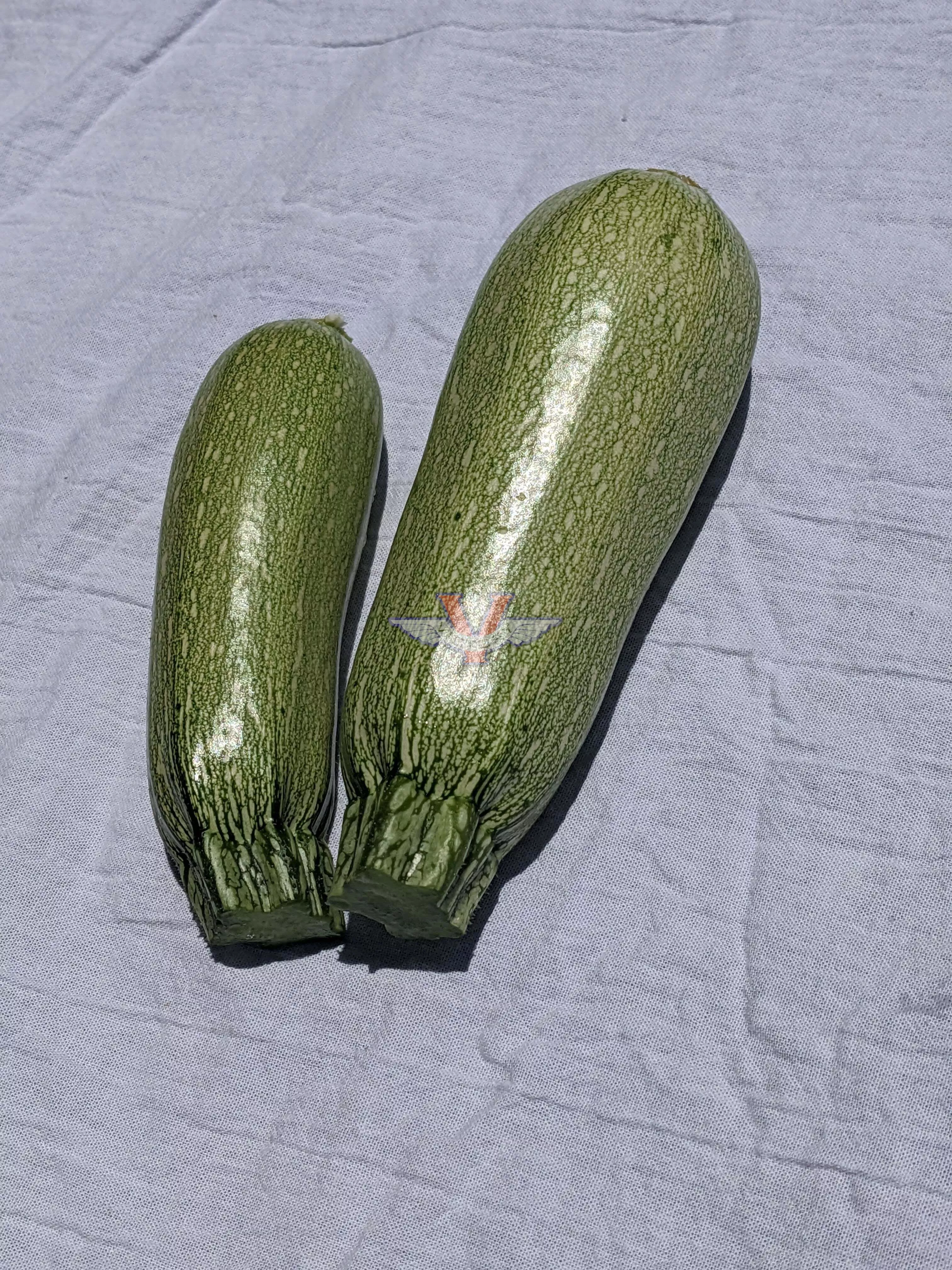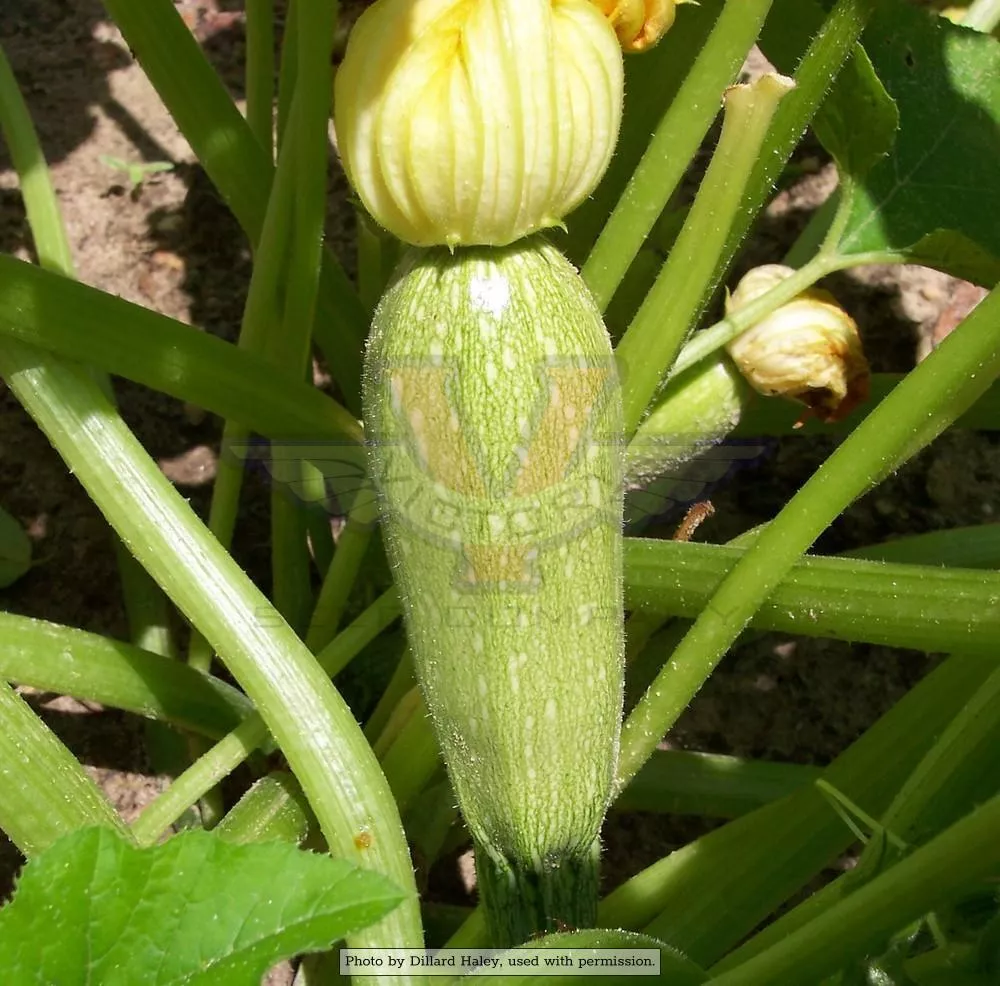







Grey Zucchini Summer Squash
Price: $3.45
SKU: 3370141As with any summer squash, you can harvest them at just about any size; we begin harvesting fruit when they reach about six to eight inches long. We prefer them at this young and tender stage when they are excellent lightly steamed, sautéed, or stir-fried. During the "high season" of summer, unless you are checking your plants daily, the fruit size can get away from you very quickly! Medium sized to large fruit can still be cooked in the same way as previously noted, but since harvest occurs during "barbecue season," we like to quarter the zucchini lengthwise, and with the skin left on, coat them in olive oil, season to taste, and then grill them until tender but firm. Often our seasoning is simply fresh ground black pepper and salt, but experiment with herbs for fun flavor variations.
'Grey' zucchini was introduced by the old D. V. Burrell Seed Growers of Rocky Ford, Colorado in 1934.[1]
Sow directly into the garden after any threat of frost has passed. Sow one inch deep in hills or rows spaced 24 to 30 inches apart.
Harvest when the fruit is six to eight inches long or still tender. Harvest will be lengthened if you keep picking.
- "Vegetables of New York - Vol. 1 Part IV - The Cucurbits," New York Agricultural Experiment Station, 1937.
Customer Reviews:
By Sarah Ashley on July 12, 2020
First of my five summer squash varieties to set flowers and develop fruit. I feel like these plants went from flowering to fruiting overnight and the bushes are LOADED with delicious squash. Since I grew up calling these Mexican squash my first harvest was used to make a Costa Rican picadillo, yum!
By Crissa Becker on March 2, 2019
Nice taste and plants, but not pest resistant. Grows pretty well, gets squash borers more often than straightneck squash.
By Anne Holzinger on August 17, 2015
This zucchini did okay. I was a little disappointed in the taste compared to other varieties I've grown. I will probably try a different variety next year.
By Nick Walsh on July 13, 2014
This was the first zucchini to produce and while they are shorter fruits, there great. The foliage has beautiful markings, wich many mistake as mildew. This zuchini is beautiful and second only to the gold zucchini in beauty.
By Janet Szabo on August 4, 2012
This has been a great addition to our garden. It produces heavily and tastes great. I love the color and the thinness of the skins. Will definitely order this again for next year.












